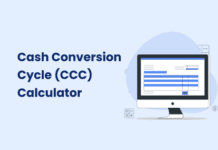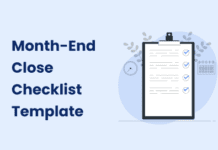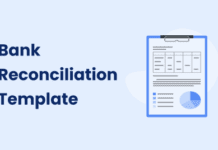If you manage accounts receivable (AR) or work in finance, you know that keeping cash flow steady can often feel like a never-ending challenge. You are tracking overdue invoices, anticipating when payments will come in, and trying to stay ahead of any disruptions. In business, cash flow is everything.
A few late payments might not seem like much, but they can throw off operations and make planning difficult. In fact, 55% of all B2B invoiced sales in the U.S. are overdue, which highlights how common and disruptive late payments can be for businesses
That is where forecasting accounts receivable becomes essential. By analyzing past payment trends, AR forecasting gives you a clear picture of what to expect. It helps you manage cash flow more effectively, so you can make decisions with confidence and avoid the surprises that come with unpredictable payments.
In this blog, we will cover why AR forecasting is important, outline simple steps such as creating a sales forecast and calculating Days Sales Outstanding (DSO), and show how these practices can strengthen your cash flow management. We will also explore how tools like Peakflo can make the process easier and more accurate.
What is Accounts Receivable Forecasting?
Accounts receivable forecasting is the process of predicting when customers will pay their invoices. By looking at past payment trends and behaviors, businesses can estimate their incoming cash flow more accurately. This helps them make better decisions and avoid cash flow gaps that can disrupt daily operations.
The main goal of forecasting accounts receivable is to know when to expect payments. With this knowledge, you can plan for expenses, investments, and growth opportunities. It is a proactive way to manage your finances and reduce the risk of late or inconsistent payments.
Here are the main elements of accounts receivable forecasting:
- Historical data: Look at how long it usually takes customers to pay their invoices.
- Customer payment patterns: Notice trends, such as which customers tend to pay late or whether certain times of the year affect payments.
- Business cycles: Consider larger factors, such as industry trends or economic conditions, that could impact payment behavior.
Accounts receivable forecasting is key to managing cash flow. With accurate predictions, your business can better manage expenses, avoid shortfalls, and make smarter financial choices.
Why Forecasting Accounts Receivable is Important?
Accurately forecasting accounts receivable plays a vital role in financial management. It gives you a clear view of when payments are expected, helping you plan both short-term and long-term financial needs. Here are the key reasons why AR forecasting is so valuable:
- Improves Cash Flow Management
By analyzing aging reports and forecasting when payments will arrive, you avoid cash flow gaps. This allows you to cover operating costs, pay vendors on time, and manage payroll smoothly without relying on emergency loans or credit.
- Provides Data for Better Decision-Making
Knowing when cash will come in helps your finance team make better decisions. With accurate data, you can time purchases, plan future expenses, and invest in business growth with greater confidence. For instance, Peakflo’s automated reporting features streamline financial data access, allowing teams to focus on strategy rather than administrative tasks. - Predicts Customer Payment Patterns
AR forecasting helps identify customer payment behaviors. You can spot which customers tend to pay late and adjust your credit policies accordingly. This insight is crucial for minimizing risk. Peakflo’s capabilities include monitoring customer payments and utilizing AI to predict changes in payment behavior, enabling you to act proactively. - Enhances Efficiency with Automation
By automating payment reminders and invoice tracking, tools like Peakflo have helped companies reduce average overdue days significantly and save thousands of man-hours. For example, companies have reported collecting receivables 10-15 days faster on average, simply by streamlining their AR processes with automation.
With accurate accounts receivable forecasting, you can stay ahead of cash flow problems and make smarter financial decisions.
How to Create an Accurate Accounts Receivable Forecast?
Forecasting accounts receivable is easier than you might think. It starts with looking at past payment data and understanding how your customers typically pay. By reviewing historical trends and factoring in any changes in the market, you can predict when future payments will come in. Using simple forecasting tools helps to refine these estimates, giving you a more precise view of your cash flow.
With this proactive approach, you can make sure your forecast reflects actual customer behavior and manage your cash flow more effectively.
Step 1: Create a Sales Forecast
Creating a sales forecast is the foundation for accurate AR forecasting. By predicting future sales, you can estimate how much revenue will be generated, which, in turn, helps project incoming payments. Here is how you can create an effective sales forecast:
- Use Historical Sales Data:
Start by looking at your company’s past sales performance. Analyze trends over several months or years to identify patterns. This will give you a baseline for predicting future sales. For example, if your business typically sees higher sales during certain seasons, factor that into your forecast. - Consider Economic and Market Factors:
Sales are not just driven by your company’s past performance. External factors such as market trends, economic conditions, and industry changes can significantly impact future sales. Stay informed on these influences to adjust your sales forecast accordingly. - Leverage Tools and Software:
Using technology such as customer relationship management (CRM) systems or AR automation tools can make forecasting more accurate and efficient. These tools gather real-time data and generate sales predictions based on past trends and market conditions, saving you time and reducing the chances of human error. - Formula for Sales Forecast:
A simple formula to calculate your sales forecast can be:
| Sales Forecast = (Last Month’s Revenue + Expected Growth – Expected Churn) |
This formula allows you to project future sales while accounting for potential customer loss and growth opportunities.
Once you have your sales forecast in place, the next step is to calculate your Days Sales Outstanding, which helps in estimating when your customers will make their payments.
Step 2: Calculate Days Sales Outstanding (DSO)
Days Sales Outstanding (DSO) is one of the most important metrics in forecasting accounts receivable. It measures how quickly your company collects payments after a sale is made. The lower your DSO, the faster you are getting paid, which means better cash flow. Here is how you can calculate it:
- Definition of DSO:
DSO represents the average number of days it takes to collect payment after a sale is made. It helps you understand how efficient your collections process is and whether your customers are paying on time. - Formula for DSO:
The formula for calculating DSO is:
| DSO = (AR / Total Credit Sales) x Number of Days in the Period |
For example, if your company has $100,000 in AR and $500,000 in credit sales over a 30-day period, your DSO would be 6 days. This means it takes an average of 6 days to collect payment.
- Importance of DSO:
Tracking DSO gives you valuable insights into the efficiency of your collections process. If your DSO is increasing over time, it may indicate that customers are taking longer to pay, which could lead to cash flow issues. Conversely, a low DSO indicates that your business is collecting payments promptly, which is ideal for maintaining smooth cash flow. - Historical DSO Trends:
Looking at your historical DSO data helps you spot trends. Are customers taking longer to pay now than they did last year? Are there certain months or periods when collections slow down? Identifying these trends allows you to adjust your strategies and improve collection efficiency. - Industry Benchmarks:
Different industries have varying standards for DSO. It is important to compare your DSO with industry averages to see how you stack up. For example, the retail industry generally has a lower DSO, while sectors such as manufacturing or construction may have longer payment cycles. Understanding these benchmarks can help you set realistic targets for your own business.
The next step is to use it alongside your sales forecast to estimate your future AR.
Step 3: Forecast Accounts Receivable
Now that you have a sales forecast and your DSO, you can move on to the most crucial step: forecasting accounts receivable. This step helps you predict how much cash your business will collect over a specific period, giving you a clearer picture of your future financial health.
- Use DSO and Sales Forecast
To forecast accounts receivable, you will need both your sales forecast and DSO. These two metrics work together to estimate how much cash will be coming in based on when you expect customers to pay their invoices.
- Formula for AR Forecast
The formula to forecast your AR is:
| Accounts Receivable Forecast = (Sales Forecast / Time Period) x DSO |
For example, if your sales forecast is $300,000 for a 30-day period and your DSO is 15 days, the AR forecast would be $150,000. This means you can expect to collect $150,000 in payments during that period.
- Example Calculation
Let us say you expect $200,000 in sales next month, and your DSO is 20 days. By applying the formula:
- Sales Forecast = $200,000
- DSO = 20 days
- AR Forecast = ($200,000 / 30) x 20 = $133,333
In this case, you can expect to receive $133,333 in AR for that period. - Interpretation of Results
Once you calculate your AR forecast, you will know how much cash you can expect to collect. This helps with planning for expenses, investments, and any potential shortfalls. If your AR forecast shows that expected cash inflows will not cover upcoming costs, you can take action early, such as tightening up payment terms or following up with late-paying customers.
With your AR forecast in hand, you can move forward with more confidence, knowing when and how much cash will flow into the business.
What are the Benefits of Effective Accounts Receivable Forecasting?
Accurately forecasting accounts receivable offers more than just a glimpse into future cash flow. It is a powerful tool for boosting your business’s financial health and stability. Here are some of the key benefits of effective accounts receivable forecasting:
- Optimized Working Capital
When you know when cash will come in, you can manage your working capital more efficiently. This means you are less likely to need short-term loans or emergency funding. Instead, you can allocate resources to growth, debt repayment, or new investment opportunities.
By Forecasting accounts receivables, you can identify potential cash flow gaps in advance. This gives you time to take action, whether that involves speeding up collections or adjusting your credit terms. As a result, you lower the risk of needing to take on debt to cover shortfalls.
- Enhanced Investor Confidence and Planning Accuracy
Accurate forecasts build investor confidence. They give stakeholders the data needed to assess your business’s financial health and make informed decisions. AR forecasting also allows for more precise future planning, which improves your company’s strategic planning and long-term growth potential.
By adopting strong AR forecasting practices, you can create a more stable financial foundation and reduce the uncertainties that often come with managing receivables.
Is Forecasting Accounts Receivable Difficult?
If you have concerns about the complexity of AR forecasting, you are not alone. Many people worry that forecasting accounts receivable requires advanced financial expertise or sophisticated tools. However, AR forecasting is more straightforward than you might think, especially when you break it down into simple steps. By using historical data, tracking payment patterns, and applying basic formulas, anyone in finance can create a reliable AR forecast.
The key is understanding your sales data and customer payment behaviors. With a few essential metrics, such as DSO, discussed above, you can easily project when future payments will come in. While it might seem daunting at first, AR forecasting becomes more intuitive the more you practice. It is a powerful tool that helps you stay ahead of potential cash flow issues, and once you get the hang of it, it becomes second nature.
But what if you want to take it a step further? This is where automation tools, like Peakflo, come into play. They simplify the process even more, giving you real-time data, automated reminders, and the ability to predict customer payment behaviors—all without the heavy lifting.
How Can Peakflo Help?
- Simplified AR Forecasting with Real-Time Insights:
Peakflo offers an automated solution that enhances cash flow prediction accuracy by providing real-time insights into customer payment behaviors. For example, Ninja Van reduced their collection time by 10-15 days after implementing Peakflo, significantly improving their forecasting accuracy.
- Enhanced Payment Tracking and Workflow Automation:
By monitoring customer payment behavior and automating key workflows, Peakflo helps you forecast payment arrivals more precisely and reduces cash flow surprises. InMobi experienced a decrease of 9 days in average overdue days using Peakflo’s invoicing and automated reminders, enabling more accurate cash flow projections and efficient resource allocation.
- AI-Powered Receivables Dashboard for Essential AR Metrics:
The platform provides real-time monitoring of critical AR metrics such as DSO, overdue amounts, and aging balances. This allows you to predict when receivables will convert into cash based on real-time data.
- Comprehensive AR Reports for Forecast Refinement:
Peakflo offers detailed AR reports that give a complete view of your accounts receivable landscape, helping you refine your forecasts. By utilizing these reports, Glints improved their follow-up efficiency by 95%, resulting in faster collections and more predictable cash flow patterns.
- Avoiding Cash Flow Surprises with Real-Time Adjustments:
Insights into payment trends and overdue invoices allow you to adjust forecasts based on real-time data, minimizing the risk of unexpected cash flow issues.
Conclusion
Forecasting accounts receivable is essential for managing your business’s cash flow, optimizing working capital, and ensuring financial stability. By creating a solid sales forecast, calculating your DSO, and using these metrics to project future receivables, you can make informed decisions that will strengthen your financial position.
For businesses looking to streamline the forecasting process and automate key AR functions, tools like Peakflo are indispensable. Peakflo’s real-time data, predictive insights, and automation capabilities help ensure that you stay on top of your receivables, minimize overdue payments, and enhance the accuracy of your financial forecasts.
Curious to know how Peakflo can transform your AR management and improve your forecasting? Book a Demo.









![Why AI Sales Calls Are Making Good Sales Reps Even Better [2025 Guide] ai sales calls](https://cdn-kmjmp.nitrocdn.com/YvtqmrsiHUxqerlSiZgbfzqqTARWTElr/assets/images/optimized/rev-a4aafe3/blog.peakflo.co/wp-content/uploads/2025/09/65168cf6-3001-4733-8cbc-12d5684cf449-218x150.webp)

































